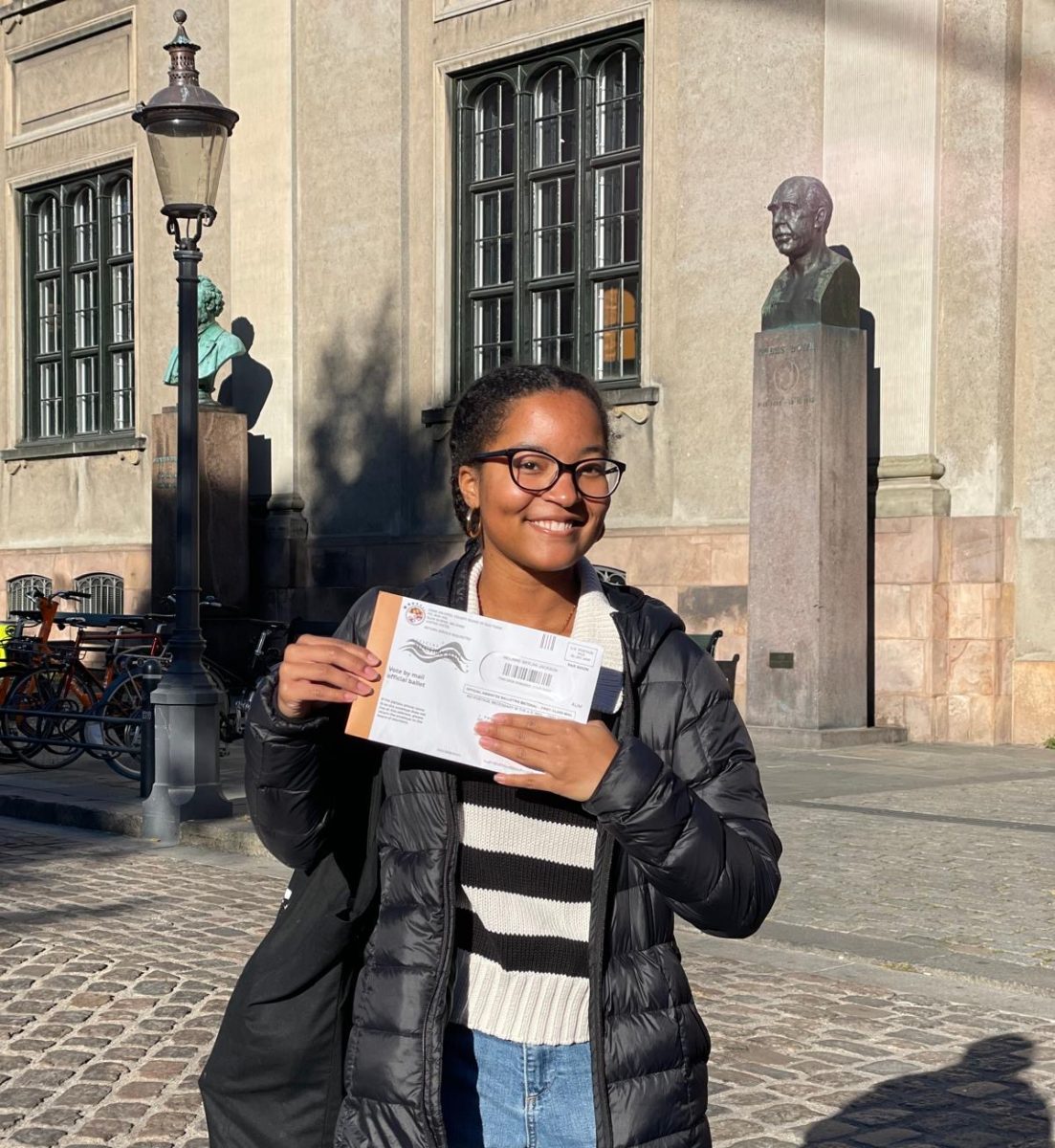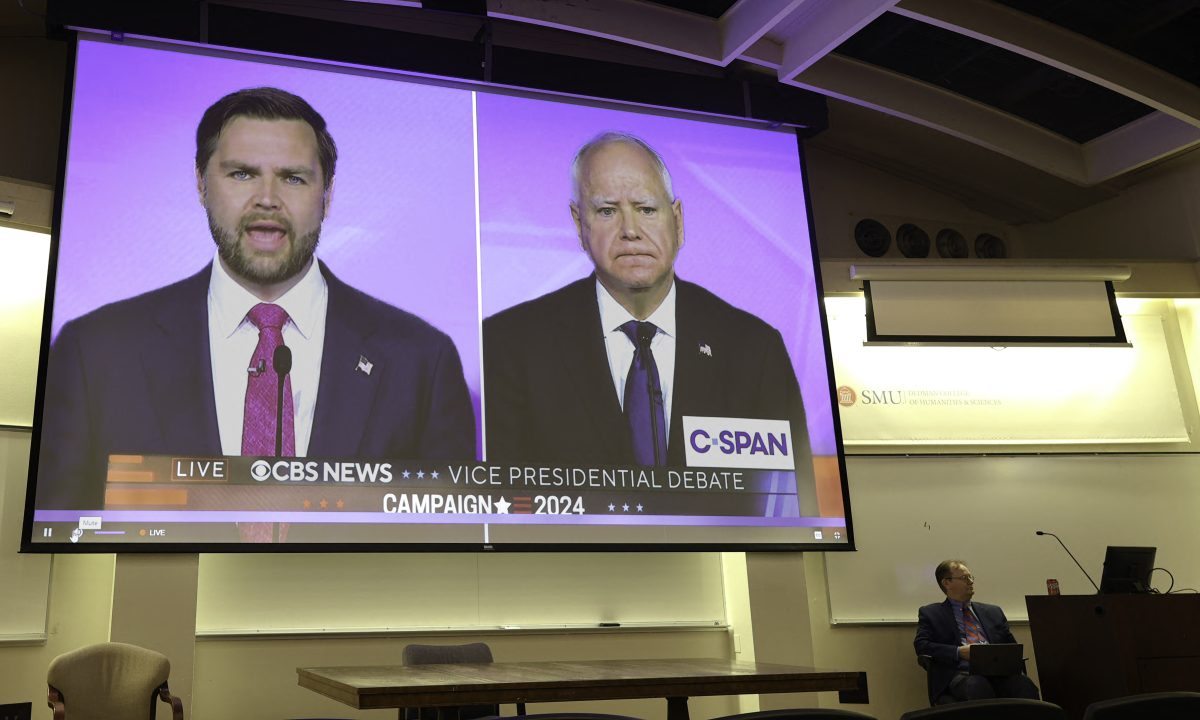Generation X-ers hear stories of racial, sexual or religious hatred and are appalled at the viciousness of man. Unfortunately, this type of brutality is not new.
Mark Curriden, legal affairs writer for The Dallas Morning News spoke Thursday about a trial that was such a mockery of justice that it continues to haunt the legal system 96 years later, the 1906 lynching of Ed Johnson in Tennessee.
Curriden spoke to students at 12:15 p.m. in Florence Hall about Ed Johnson and the series of events that led to his death and the trial war that ensued.
“When I was studying law, I kept coming across references to Shipp v. U.S., and I wondered what the case was all about,” Curriden said. “As I investigated further, I could not find more detailed information and began thinking about this case that seems to have been lost with the passage of history.”
Curriden said that his search took him to Georgia, Tennessee and Washington D.C., among other places, as he tried to locate the data. He finally learned the story of Johnson. As he studied the records maintained by places such as the Tuskegee University on black history, law and lynchings, he learned some grim truths.
In 1906, Johnson, an illiterate young 21- year old black man was framed for rape, railroaded through the criminal justice system, attacked by jurors in the courtroom, abandoned by his own lawyers and sentenced to die. His lawyers convinced him to waive his rights to an appeal saying that he was going to die and that things would be harder on his family, himself and his attorneys if he did not.
During the time of his incarceration and trial, there were two attempts by mobs of approximately 500-600 people to hang him without due process of law.
“People today just do not realize how strong the old hatreds of the South were in those days,” Curriden said. “There were over 4,708 hangings from 1882-1944 on record at Tuskegee, mostly across the southern portion of the United States. During this time, not one single person had been convicted for their part in mob rule.”
Johnson’s life was spared when two black lawyers from Georgia stepped forward to appeal his case to the U.S. Supreme Court. This was the first time that a black attorney had stood before the Supreme Court. The attorney’s name was Noah Parden.
Parden was not informed by the courts of their decision and was dismissed. As Parden arrived back in Chattanooga, Tenn., his partner, Styles Hutchins was waving two newspapers declaring the court’s decision. Justice John Marshal Harlan had issued a stay of execution. This was the first time in history that the Supreme Court intervened in a state criminal court trial.
Less than 48 hours later, a frenzied mob, assisted by the sheriff and his deputies, dragged Johnson from his jail cell, took him to the county bridge and lynched him. When Johnson had been hanging for about five minutes, the crowd became restless because he was not dying fast enough, so they shot him as well.
“Court reports state that Johnson had been shot over 50 times,” Curriden said. “One stray bullet severed the rope and the body fell to the ground. Still not satisfied, a man walked over and shot Johnson in the head five times. Then a deputy attached a note to Johnson’s chest telling the Supreme Court that they could come and get their nigger.”
The Supreme Court was outraged and requested that then president Theodore Roosevelt send the Secret Service in to investigate the incident and make appropriate arrests.
“This would be done by the FBI now,” Curriden said, “but that organization did not exist then.”
Attorney General William Moody filed a contempt of court charge at the courts direction and the sheriff of Chattanooga, Joseph F. Shipp, and a number of his deputies were arrested. They stood trial on the floor of the Old Senate Chamber of the Capital Building in Washington, D.C. and were found guilty. This was the first and last time that criminals stood before the Supreme Court for prosecution.
94 years later, Leroy Phillips Jr. filed papers and had the charges against Johnson dropped posthumously in the State of Tennessee v. Ed Johnson.
“The story of Ed Johnson presents the rare opportunity to bring to life a Supreme Court case that moves both the heart and the mind,” Curriden said, “to demonstrate that the liberties and prerogatives we so frequently take for granted were etched in flesh and blood.
Phillips and Curriden co-authored the book Contempt of Court: The Turn-of-the-Century Lynching That Launched 100 Years of Federalism. This book is being made into a motion picture and actor Morgan Freeman, Jr., was one of the individuals who purchased the movie rights, SMU Dedman Law School Dean John Attansio said.
A member of the audience asked Curriden why he felt this case had been “lost” through the passage of time.
“Maybe because the Supreme Court never had a chance to try Johnson’s case to completion,” Curridan said. “After all, Johnson was dead. What more could they do, than what they had done?”








